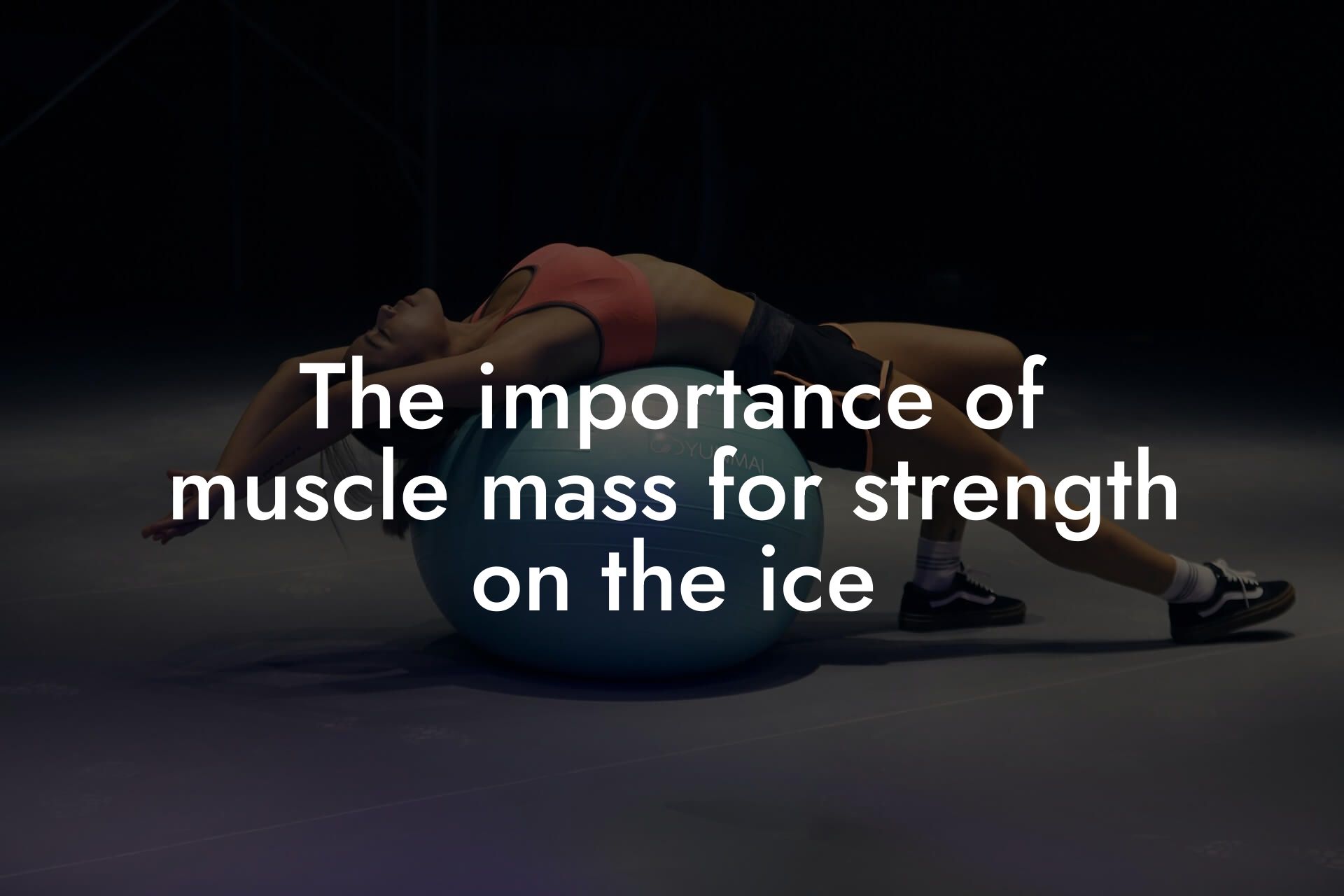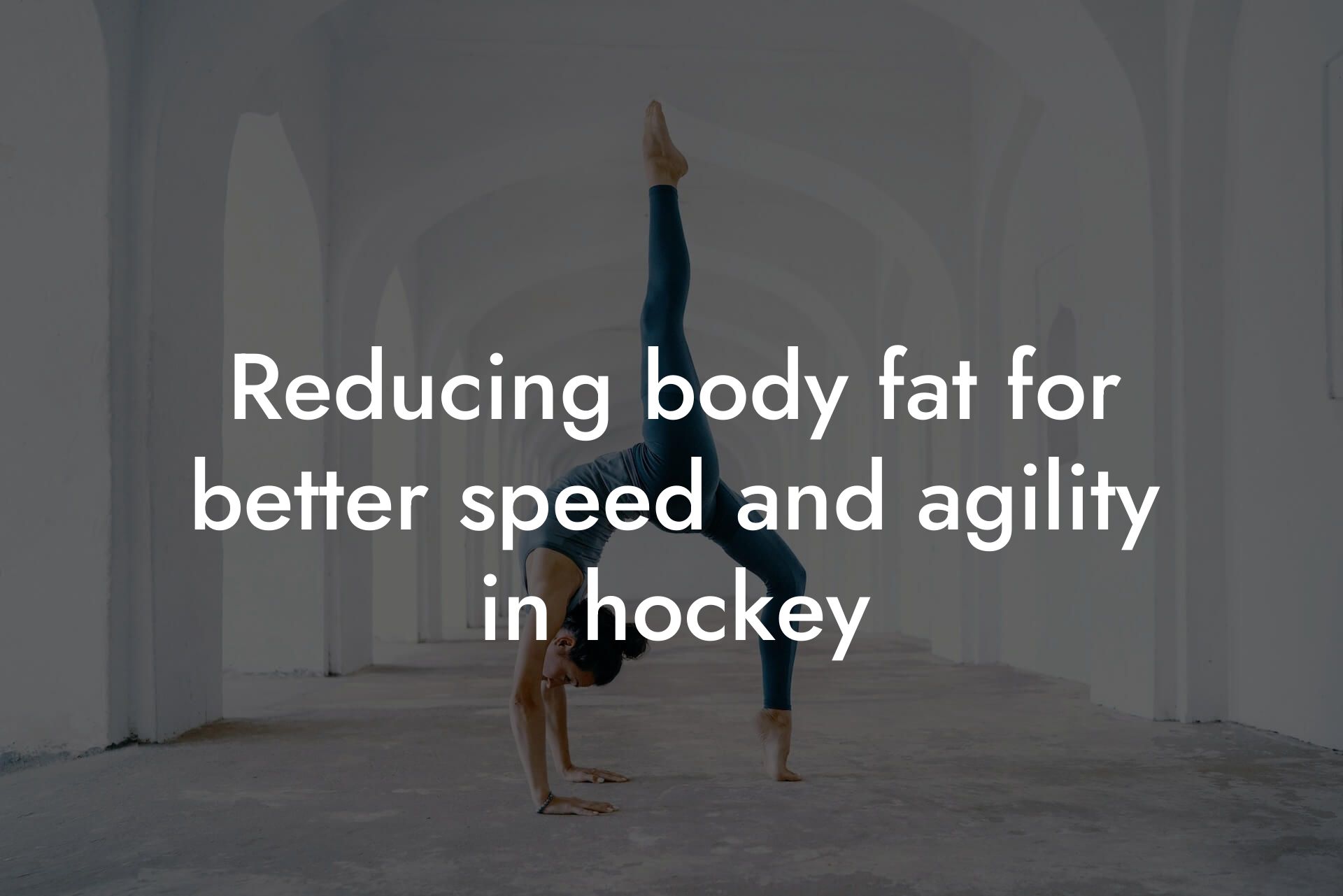As a high-earning professional, you understand the importance of maintaining a strong and healthy physique to excel in your career and personal life. As a hockey player, you require a specific set of physical attributes to dominate on the ice. A well-structured strength and conditioning program can help you achieve your goals and take your game to the next level. At Tano Performance Group, we utilize cutting-edge technology, including DEXA machines, to provide comprehensive body assessments and tailored guidance to help you optimize your physical performance.
Table of Contents
Understanding the Demands of Hockey
Hockey is a high-intensity, fast-paced sport that requires a unique combination of strength, power, speed, agility, and endurance. Players need to be able to explosively accelerate, decelerate, and change direction quickly, while also maintaining the endurance to sustain a high level of intensity over an extended period. Additionally, hockey players must be able to withstand physical contact, absorb impact, and recover quickly between shifts.
Key Components of a Hockey-Specific Strength and Conditioning Program
A comprehensive strength and conditioning program for hockey players should include a combination of exercises and training methods that address the following key components:
1. Lower Body Strength and Power: Developing strength and power in the legs, hips, and glutes is essential for hockey players. Exercises such as squats, deadlifts, and lunges should be included in the program.
2. Upper Body Strength and Endurance: Hockey players need strong shoulders, arms, and hands to maintain control of the stick, absorb contact, and shoot with power. Exercises like push-ups, rows, and shoulder presses are important.
3. Core Strength and Stability: A strong core is critical for maintaining good posture, generating power, and resisting injury. Exercises like planks, Russian twists, and Pallof presses should be included.
4. Speed and Agility Training: Hockey players need to be able to quickly change direction, accelerate, and decelerate. Agility drills, sprints, and plyometric exercises can help improve speed and agility.
5. Endurance and Conditioning: Hockey players need to be able to maintain a high level of intensity over an extended period. Conditioning exercises like cardio, high-intensity interval training (HIIT), and plyometric exercises can help improve endurance.
Periodization and Phases of Training
A well-structured strength and conditioning program for hockey players should be periodized, meaning it should be divided into specific phases or periods of training. Each phase should have a specific focus and goal, and should be tailored to the player's specific needs and goals.
A typical periodized program for hockey players might include the following phases:
1. Off-Season Phase: Focus on building strength, power, and endurance. This phase typically lasts 12-16 weeks.
2. Pre-Season Phase: Focus on building speed, agility, and conditioning. This phase typically lasts 4-6 weeks.
3. In-Season Phase: Focus on maintaining strength, power, and endurance, while also addressing specific game-related skills. This phase typically lasts 20-24 weeks.
Incorporating Plyometric and Agility Training
Plyometric and agility training are essential components of a hockey-specific strength and conditioning program. These types of exercises can help improve speed, power, and agility, while also reducing the risk of injury.
Examples of plyometric exercises that can be beneficial for hockey players include:
1. Box jumps
2. Depth jumps
3. Lateral bounds
4. Med ball throws
Examples of agility drills that can be beneficial for hockey players include:
1. Cone drills
2. Shuttle runs
3. Zig-zag runs
4. Carioca drills
Importance of Nutrition and Recovery
A well-structured strength and conditioning program for hockey players must also include a focus on nutrition and recovery. Adequate nutrition is essential for fueling the body, repairing muscle tissue, and supporting immune function. A hockey player's diet should include a balance of protein, complex carbohydrates, and healthy fats.
Recovery techniques such as foam rolling, stretching, and self-myofascial release can help reduce muscle soreness, improve flexibility, and enhance overall recovery. Additionally, adequate sleep and rest are critical for allowing the body to recover and adapt to the demands of training and competition.
Using DEXA Scans to Inform Training
At Tano Performance Group, we utilize DEXA scans to provide comprehensive body assessments for our clients. DEXA scans can help identify areas of strength and weakness, track changes in body composition, and inform training decisions.
For hockey players, DEXA scans can be particularly useful for:
1. Tracking changes in lean body mass and body fat percentage
2. Identifying areas of muscle imbalance or weakness
3. Monitoring bone density and tracking changes over time
By using DEXA scans to inform training, hockey players can optimize their strength and conditioning program, improve performance, and reduce the risk of injury.
A well-structured strength and conditioning program is essential for hockey players who want to excel on the ice. By incorporating a combination of exercises and training methods that address the specific demands of hockey, hockey players can improve their strength, power, speed, agility, and endurance. Additionally, a focus on nutrition, recovery, and the use of DEXA scans to inform training can help hockey players optimize their performance and achieve their goals.
At Tano Performance Group, we are committed to helping high-earning professionals like you achieve their fitness goals and take their business to the next level. Contact us today to learn more about our comprehensive body assessments and tailored strength and conditioning programs.
Frequently Asked Questions
What is the importance of strength and conditioning programs for hockey players?
Strength and conditioning programs are essential for hockey players as they help improve their overall performance, reduce the risk of injuries, and enhance their durability throughout the season. A well-structured program can increase a player's speed, power, agility, and endurance, giving them a competitive edge on the ice.
What are the key components of a strength and conditioning program for hockey players?
A comprehensive strength and conditioning program for hockey players should include a combination of exercises that target strength, power, speed, agility, and endurance. This may include weightlifting, plyometrics, resistance band exercises, and cardio exercises such as skating drills and high-intensity interval training.
How often should hockey players engage in strength and conditioning exercises?
The frequency of strength and conditioning exercises for hockey players depends on their individual goals, fitness level, and training phase. Generally, players should aim to train 2-3 times per week during the off-season and 1-2 times per week during the in-season.
What is the ideal training phase for hockey players?
The ideal training phase for hockey players typically includes a hypertrophy phase (building muscle mass), a strength phase (building maximum strength), a power phase (building explosive power), and a maintenance phase (maintaining strength and endurance during the season).
What is the role of nutrition in a strength and conditioning program for hockey players?
Nutrition plays a critical role in a strength and conditioning program for hockey players. A well-balanced diet that includes adequate protein, complex carbohydrates, and healthy fats is essential for fueling workouts, aiding in recovery, and supporting muscle growth and repair.
How can hockey players incorporate plyometrics into their training program?
Hockey players can incorporate plyometrics into their training program by including exercises such as box jumps, depth jumps, and resisted sprints. These exercises help improve explosive power, speed, and agility.
What is the importance of flexibility and mobility exercises for hockey players?
Flexibility and mobility exercises are essential for hockey players as they help improve range of motion, reduce the risk of injuries, and enhance overall performance. Exercises such as stretching, foam rolling, and dynamic warm-ups can help improve flexibility and mobility.
How can hockey players improve their endurance and stamina?
Hockey players can improve their endurance and stamina by incorporating cardio exercises such as skating drills, cycling, and high-intensity interval training into their training program. These exercises help improve cardiovascular fitness, increase stamina, and enhance overall performance.
What is the role of mental preparation in a strength and conditioning program for hockey players?
Mental preparation is a critical component of a strength and conditioning program for hockey players. Visualization techniques, positive self-talk, and goal setting can help players develop a strong mindset, overcome obstacles, and perform at their best.
How can hockey players incorporate strength training into their program?
Hockey players can incorporate strength training into their program by including exercises such as squats, deadlifts, bench press, and rows. These exercises help improve overall strength, power, and endurance.
What is the importance of proper warm-up and cool-down exercises for hockey players?
Proper warm-up and cool-down exercises are essential for hockey players as they help prevent injuries, improve performance, and enhance recovery. Exercises such as dynamic stretching, foam rolling, and self-myofascial release can help improve flexibility, reduce muscle soreness, and enhance overall performance.
How can hockey players incorporate agility drills into their training program?
Hockey players can incorporate agility drills into their training program by including exercises such as cone drills, ladder drills, and shuttle runs. These exercises help improve speed, agility, and quickness.
What is the role of recovery and regeneration in a strength and conditioning program for hockey players?
Recovery and regeneration are critical components of a strength and conditioning program for hockey players. Adequate rest, nutrition, and recovery techniques such as foam rolling, stretching, and self-myofascial release can help players recover from intense training and competition.
How can hockey players incorporate power training into their program?
Hockey players can incorporate power training into their program by including exercises such as box jumps, depth jumps, and resisted sprints. These exercises help improve explosive power, speed, and agility.
What is the importance of proper equipment and gear for hockey players?
Proper equipment and gear are essential for hockey players as they help prevent injuries, improve performance, and enhance overall safety. Players should invest in high-quality skates, helmets, pads, and sticks that fit properly and meet safety standards.
How can hockey players incorporate conditioning drills into their training program?
Hockey players can incorporate conditioning drills into their training program by including exercises such as skating drills, cycling, and high-intensity interval training. These exercises help improve cardiovascular fitness, increase stamina, and enhance overall performance.
What is the role of a strength and conditioning coach in a hockey player's training program?
A strength and conditioning coach plays a critical role in a hockey player's training program by designing and implementing a customized training program that addresses the player's specific needs, goals, and fitness level.
How can hockey players incorporate flexibility exercises into their training program?
Hockey players can incorporate flexibility exercises into their training program by including exercises such as stretching, foam rolling, and dynamic warm-ups. These exercises help improve range of motion, reduce the risk of injuries, and enhance overall performance.
What is the importance of goal setting for hockey players?
Goal setting is essential for hockey players as it helps them stay motivated, focused, and committed to their training program. Players should set specific, measurable, and achievable goals that align with their training phase and performance objectives.
How can hockey players incorporate mobility exercises into their training program?
Hockey players can incorporate mobility exercises into their training program by including exercises such as dynamic warm-ups, foam rolling, and self-myofascial release. These exercises help improve range of motion, reduce the risk of injuries, and enhance overall performance.
What is the role of active recovery in a strength and conditioning program for hockey players?
Active recovery is an essential component of a strength and conditioning program for hockey players. Low-intensity exercises such as cycling, swimming, and yoga can help players recover from intense training and competition, reduce muscle soreness, and enhance overall performance.
How can hockey players incorporate resistance band exercises into their training program?
Hockey players can incorporate resistance band exercises into their training program by including exercises such as banded squats, banded deadlifts, and banded rows. These exercises help improve strength, power, and endurance.
What is the importance of periodization in a strength and conditioning program for hockey players?
Periodization is essential in a strength and conditioning program for hockey players as it helps avoid plateaus, prevent overtraining, and ensure progressive overload. A well-structured periodized program can help players peak at the right time and maintain their performance throughout the season.
How can hockey players incorporate high-intensity interval training into their program?
Hockey players can incorporate high-intensity interval training into their program by including exercises such as sprints, pro agility shuttles, and battle ropes. These exercises help improve cardiovascular fitness, increase stamina, and enhance overall performance.
Here are some related articles you might love...
- Nutrition tips for maintaining energy on the ice
- The importance of muscle mass for strength on the ice
- Reducing body fat for better speed and agility in hockey
- Off-season training strategies for amateur hockey players
- Recovery techniques for hockey athletes after games
- How body composition affects hockey performance
- The benefits of DEXA scans for amateur hockey players
- Balancing strength, speed, and agility in hockey
- Bone density and injury prevention in hockey
Zak Faulkner
Zak Faulkner is a leading authority in the realm of physical health and body composition analysis, with over 15 years of experience helping professionals optimise their fitness and well-being. As one the experts behind Tano Performance Group, Zak has dedicated his career to providing in-depth, science-backed insights that empower clients to elevate their physical performance and overall health.
With extensive knowledge of DEXA technology, Zak specializes in delivering comprehensive body assessments that offer precise data on body fat, muscle mass, bone density, and overall physique. His expertise enables individuals to make informed decisions and achieve their fitness goals with accuracy and confidence. Zak’s approach is rooted in a deep understanding of human physiology, combined with a passion for helping clients unlock their full potential through personalised strategies.
Over the years, Zak has earned a reputation for his commitment to excellence, precision, and client-focused service. His guidance is trusted by top professionals who demand the best when it comes to their health. Whether advising on fitness programs, nutritional strategies, or long-term wellness plans, Zak Faulkner’s insights are a valuable resource for anyone serious about taking their health and fitness to the next level.
At Tano Performance Group, Zak continues to lead our Content Team revolutionising how professionals approach their physical health, offering unparalleled expertise that drives real results.




